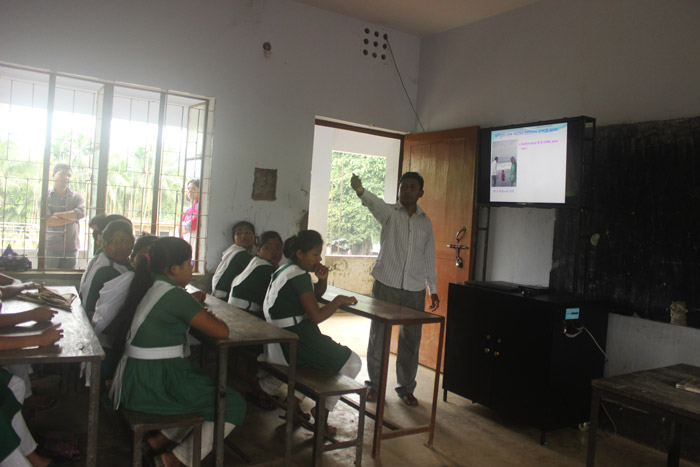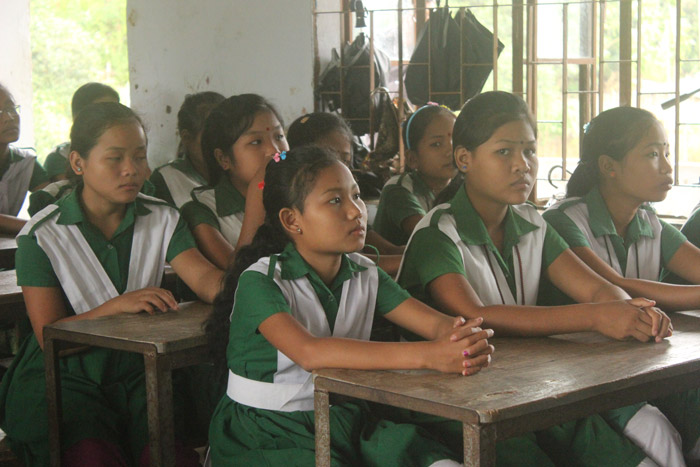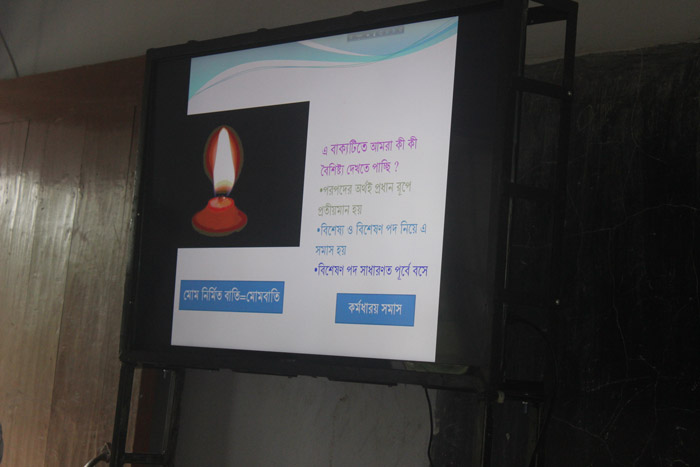
This is a challenge of 21st century to provide education service in rural Bangladesh. Although the government has taken initiative to set up multimedia classrooms in every school, there are still 9300 schools all over the country lacking power facilities. Moreover, there is no constant supply of power in the remote areas. Besides, the equipment used to set up multimedia classrooms in the non-electricity areas is very expensive.
Innovators of A2i Innovation lab (iLab) developed a device for multimedia classroom called “Low Cost Off-grid Multimedia Classroom”. The initiative is currently in Thanchi of Bandarban, Itna in Kishoreganj, Batiaghata of Khulna and Tetulia Pilot of Panchagarh. Gradually it is possible to spread across the country. Chadni Tripura, a 13-year-old primary school student in Thanchi, Bandarban district, had to travel for several hours every day to reach her school from home, but she has to study in the dark.

The school, like the entire community is devoid of electricity and therefore beyond the reach of conventional multimedia classroom facilities. Tripura being their native language, it is difficult for her to read and write in Bangla and English. Many of her friends have dropped out of school because they are not finding any interest in studying. With the objective of making relevant global and local teaching and learning content available to the teachers and students all across Bangladesh, the government has already established multimedia classroom setup in more than 23,500 primary and secondary schools. But the challenge remains when expanding this solution into areas with frequent load shedding and/or areas off grid electricity like Thanchi.

The conventional alternate power solutions are not enough strong to power up conventional multimedia electronic items (like computer, projector). The Innovators of iLab understood the latent demand for a low-cost technology that could address all these challenges and be suitable to the local context and environment. Thus, they came up with a high-tech solar-powered multimedia unit consisting of a single board computer (capable of storing any type of digital content) and a high-resolution monitor (allowing teachers to project any content to a class). Given the low-power consumption feature, the system after fully charged can run classes for 3 hours each day for at least 7 days. Compared to conventional multimedia projectors, this unit would last at least three times longer.

Since the whole unit is developed and assembled locally, maintenance and replacement issues can be taken care of by the innovators themselves. Therefore, we see the opportunity of an innovation being transformed into a business model. In terms of education delivery, teachers can now store and use digital contents that they have gathered through different channels (like Youtube, Teachers’ blog) and local teachers’ platforms (like Muktopath, Sikhok-Batayon). Students can enjoy classes better and have an in-depth learning experience. Most importantly, all students can get access to the same quality of education. Because the device is small, any school can easily increase the number of multimedia classrooms. Any training provider, including teacher training can run continuously using this device.